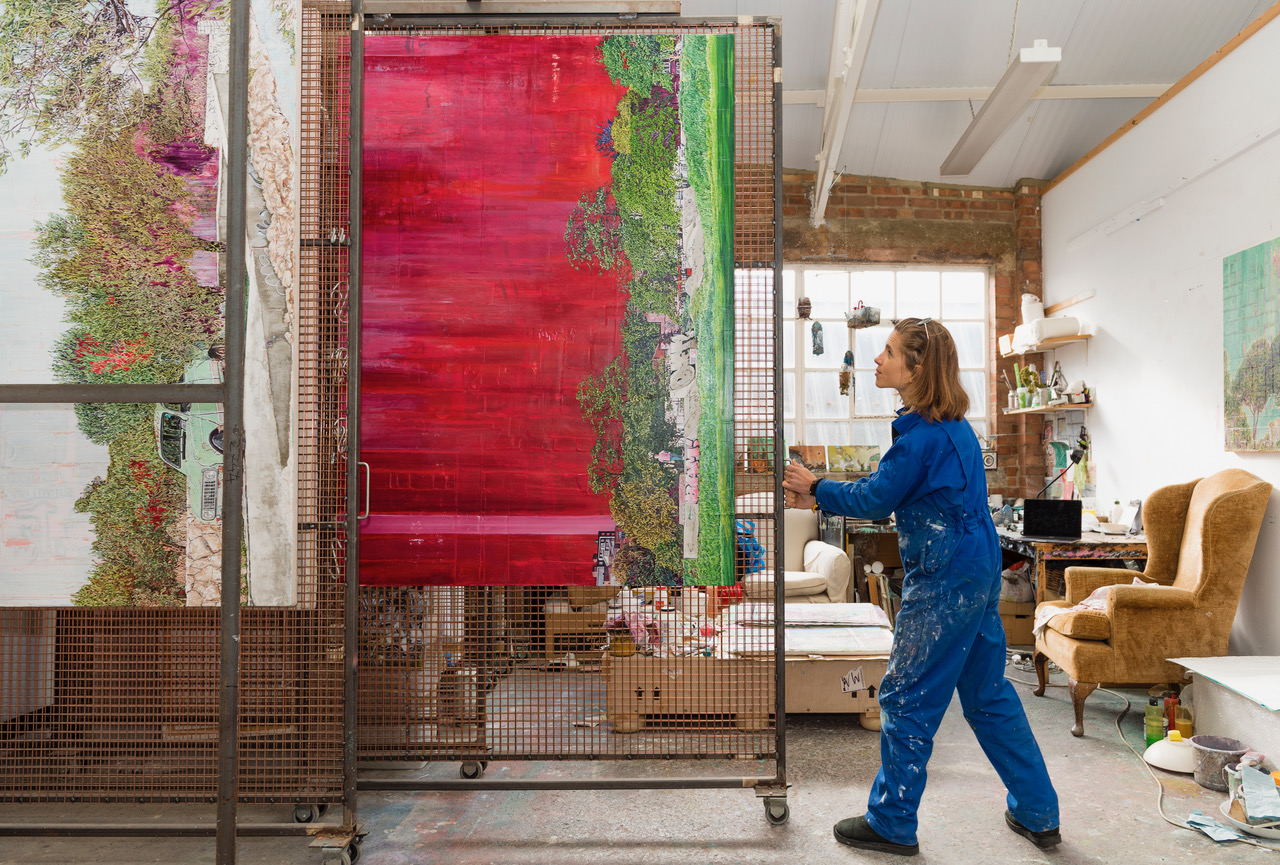Miranda Donavon
For all enquiries please contact us
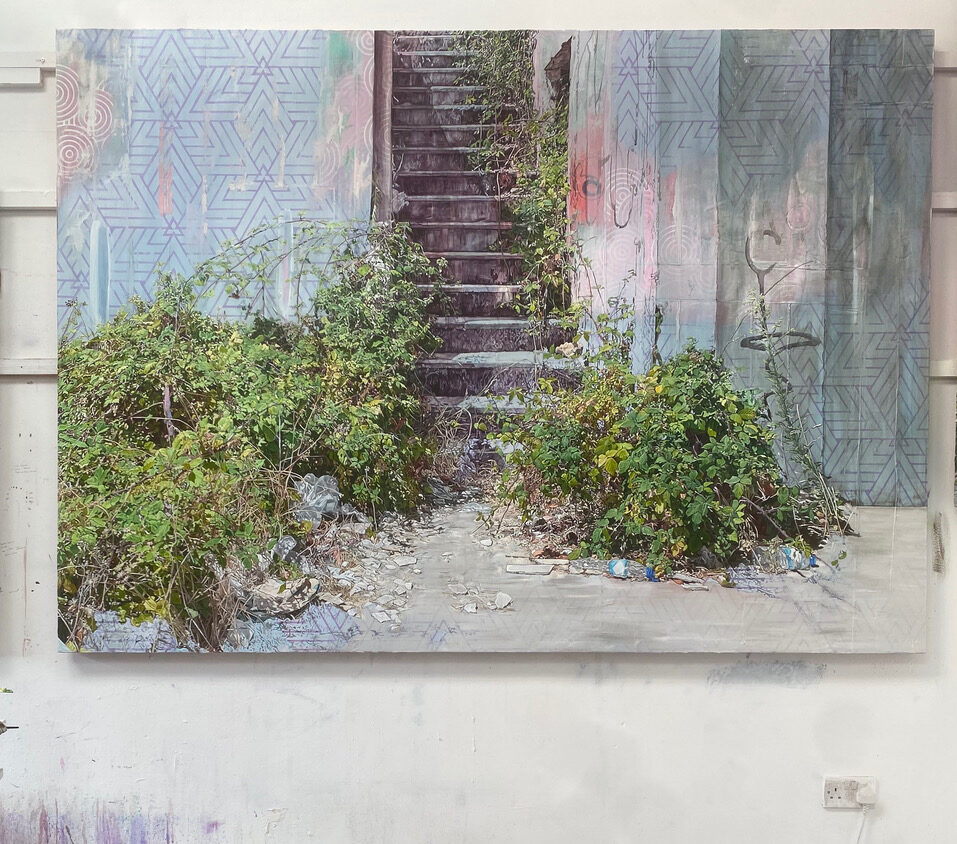
Transition 2024
Oil, Acrylic & Mixed Media on Canvas,
170.5 x 241 x 4 cm
POA
Raised between London, Holland and Gozo, an island off Malta, Donovan “learnt to carry strands of different societies, different cultures, within me.” She read History of Art at the University of Bristol, followed by Fine Art at the Ecole des Beaux Arts d’Aix-en-Provence and at The City & Guilds of London Art School. She graduated in 2005 with an in-depth knowledge and appreciation for artists ranging from the Dutch landscape artists of the Golden Age to Anselm Kiefer, a deep interest in the sculptural possibilities of painting, and a lasting preoccupation with walls.
“Age-old, enduring… walls we walk blindly past every day to the ancient walls of the Lascaux Caves in France. Their layers talk of man’s history, of hopes as well as fears. Walls create havens as well as barriers, whilst their surfaces tell stories through their colours and the marks left both by man and the elements.” More »

"Stairways and doorways have always captivated me. For me they are like portals to new beginnings taking one into the excitement of the unknown. When I started this piece I didn’t know I’d soon be moving house, living out of a bag for 6 months, and that my father would die during the making of it. To this end, for me, it makes it all the more pertinent acting as a reminder that life is in constant flux and change and that these things are indicative of forward motion. Ultimately however it reminds me that in spite of my wanting to seek out order, in a bid to find "safety", so little, if anything, in life can be controlled and as such it is the excitement of the unknown which should be embraced. More »
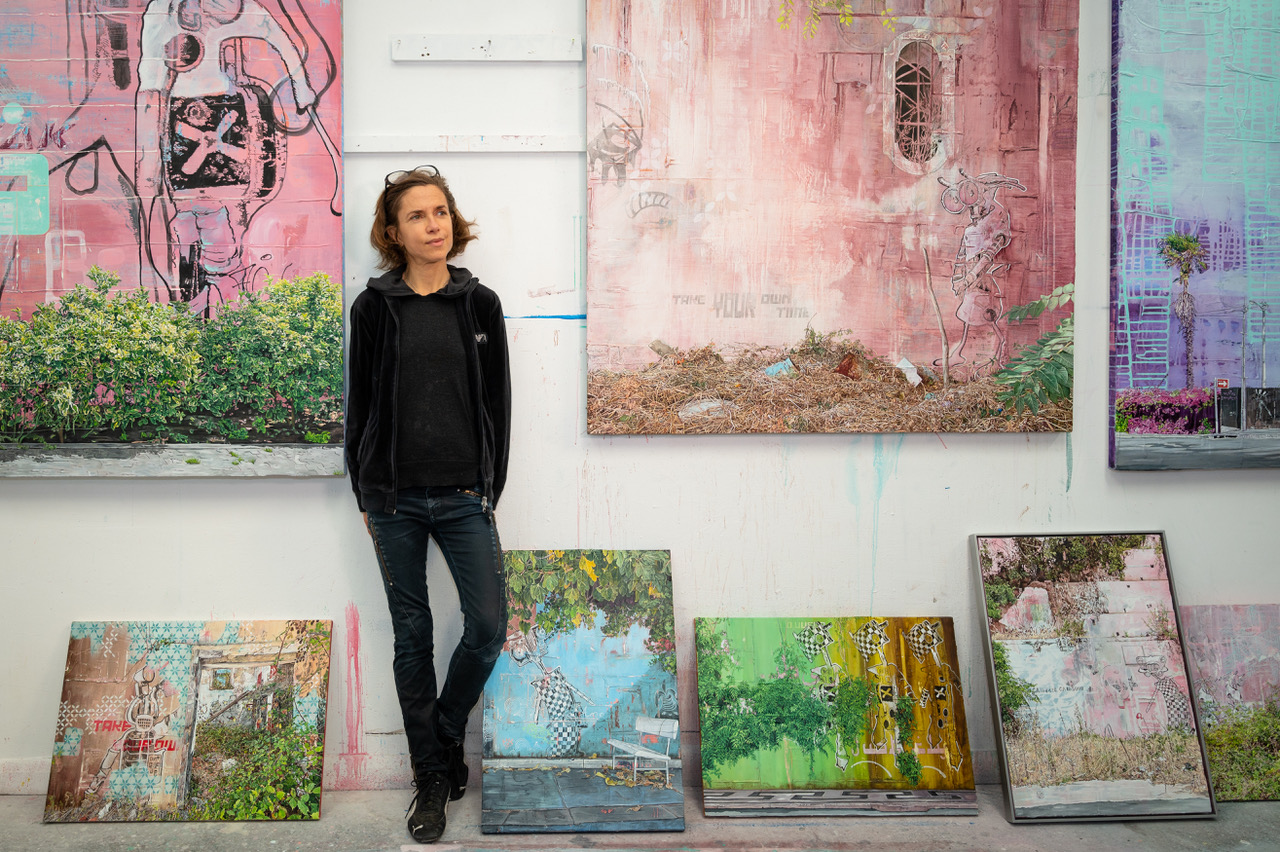
ARTIST SPOTLIGHT
I had the pleasure of meeting Miranda Donavon after a mutual friend’s introduction. A drink at the Groucho led to a much anticipated visit to her studio in Harlesden, I'm delighted to share our conversation, during which I asked Miranda about the inspiration and influences behind her work.
What inspired you to pursue art?
After graduating from Bristol Uni with a History of Art degree, I spent my first year in Aix-en-Provence attending art classes at the École Supérieure d'Art. Much of my spare time was spent drawing, painting, and reading. The internet was a recent phenomenon and with a brick of a phone I had few distractions! It was during this time, I remember feeling a burning desire to pursue painting, I’m sure the incredible light and surrounding influence of Cezanne and Emile Zola contributed to this, so I applied to the Fine Art Degree course.
I spent a great first year on this course but had to return to the UK where I completed my Fine Art Degree at The City and Guilds of London Art School in two years with the help of The Fenton Arts Trust Scholarship, which covered my fees for the final year. I will be forever grateful to them for their support.

How would you describe your artistic style or aesthetic?
There are two fairly distinct styles at play in my work. The genesis of every painting I make, is a “wall”. During this initial phase, I freely explore colour, line, and marks, applying paint in a gestural and physical manner. Consequently, the appearance of the work at this stage often adopts an abstract aesthetic.
During the second phase of the work, when I introduce a landscape or urban scene, figuration comes into play, at times even verging towards photorealism.
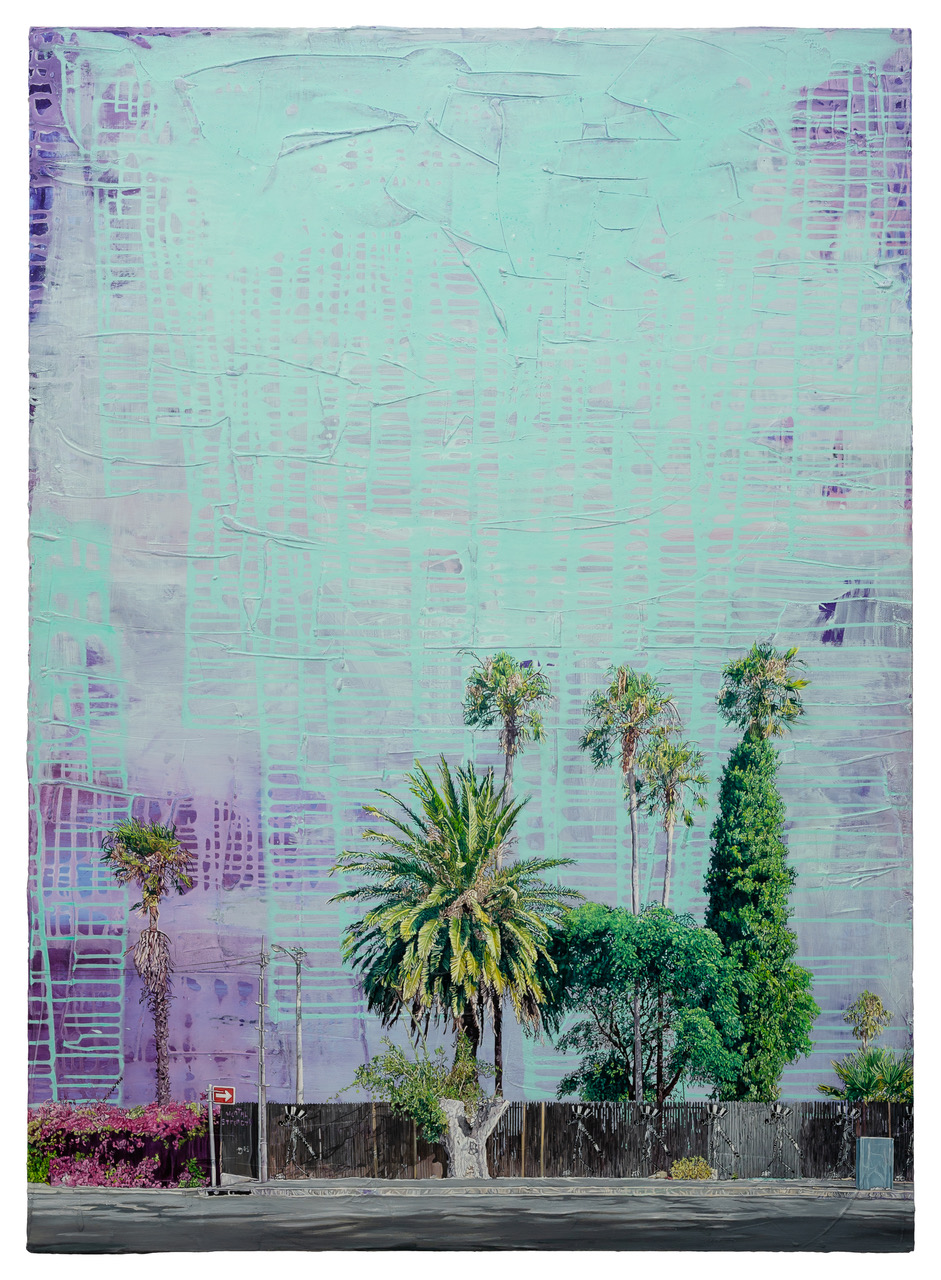
What mediums do you prefer to work with, and why?
I primarily work with oils, acrylics, and building materials mixed with polymers. Occasionally I incorporate auto paints into my work. I choose these materials for the effects they enable me to achieve, such as the translucent, aged appearance of dry-stone walls created with the cement-like substance I use for texture, or the layering of imagery with acrylics, which dries quickly and can be easily stripped back. Oils are typically introduced at the final stage of a painting, due to the "thick over thin" rule adding richness to the overall appearance as well as creating a contrast to the dryer stone wall background.
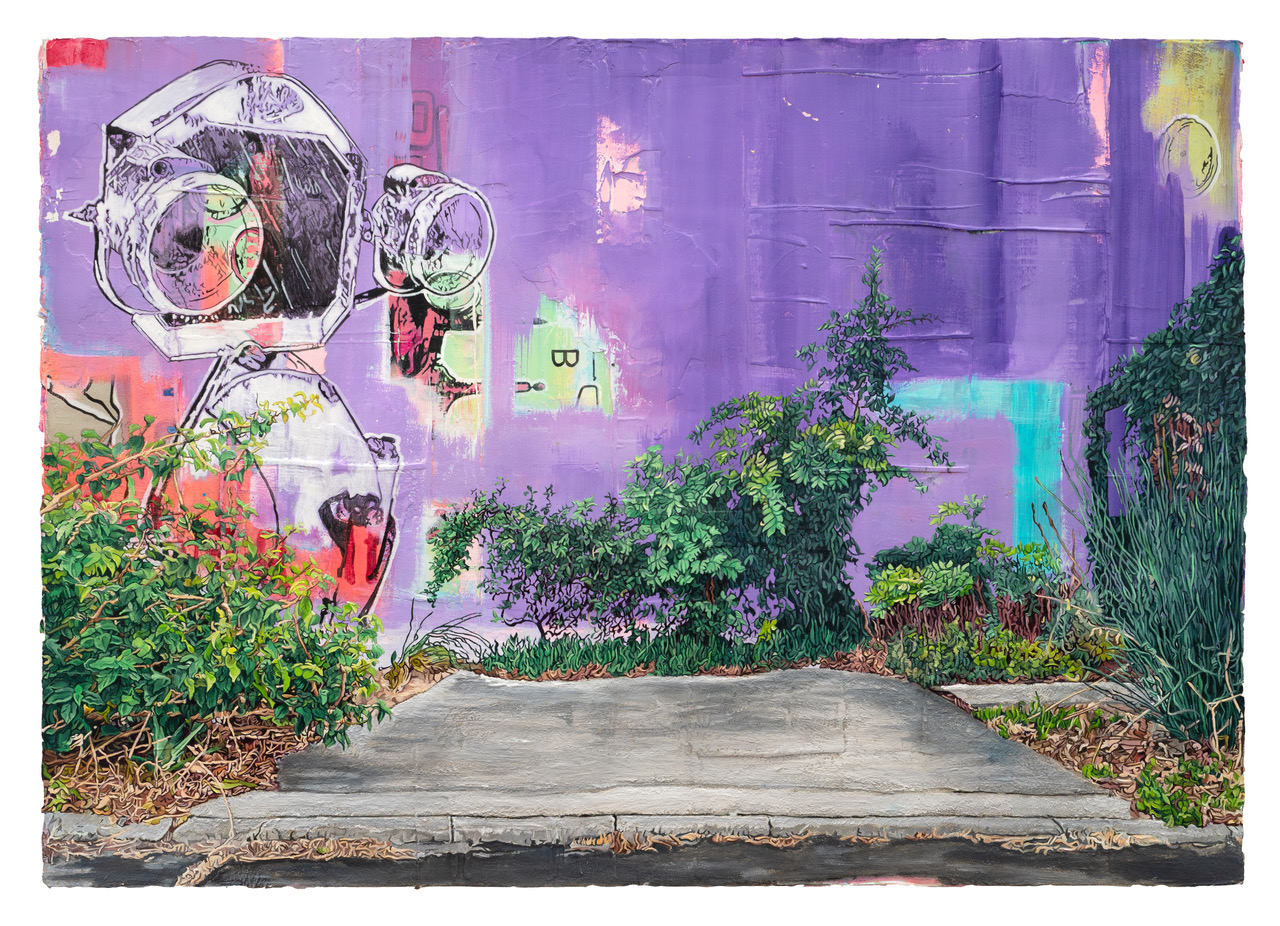
What themes or subjects do you explore in your artwork, and why are they significant to you?
Wherever I am in the world, I’m constantly drawn to documenting subject matter through photographs that speak about life's differences. It’s a running family joke my holiday photos are not the expected! Particularly however, I’m fascinated by the relationship between urban and rural environments, humanity and nature, order and chaos, as well as beauty and decay. By bringing these polarities together, my aim is to create a sense of tension, highlighting the differences so making them more apparent. Yet, perhaps paradoxically, I aim to convey how they can coexist. My paintings are intended to act as allegories for the differences in the wider world around us, and therefore, I strive for these polarities to not only coexist but to do so harmoniously. Ultimately, my practice is one of hope, as without hope, I would argue, what is the point!

Are there any particular artists or art movements that have influenced your work?
Anselm Kiefer has always been an idol of mine, with his profoundly powerful, spiritual and highly textured paintings. I've also found inspiration in the works of artists from the Dutch Golden Age, particularly Jacob Van Ruisdael, known for his expansive skies and low-lying horizons. Additionally, the work of Jean-Michel Basquiat, Paul Klee, Sean Scully, and the earlier works of Nigel Cook have been frequent references in my own artistic practice.
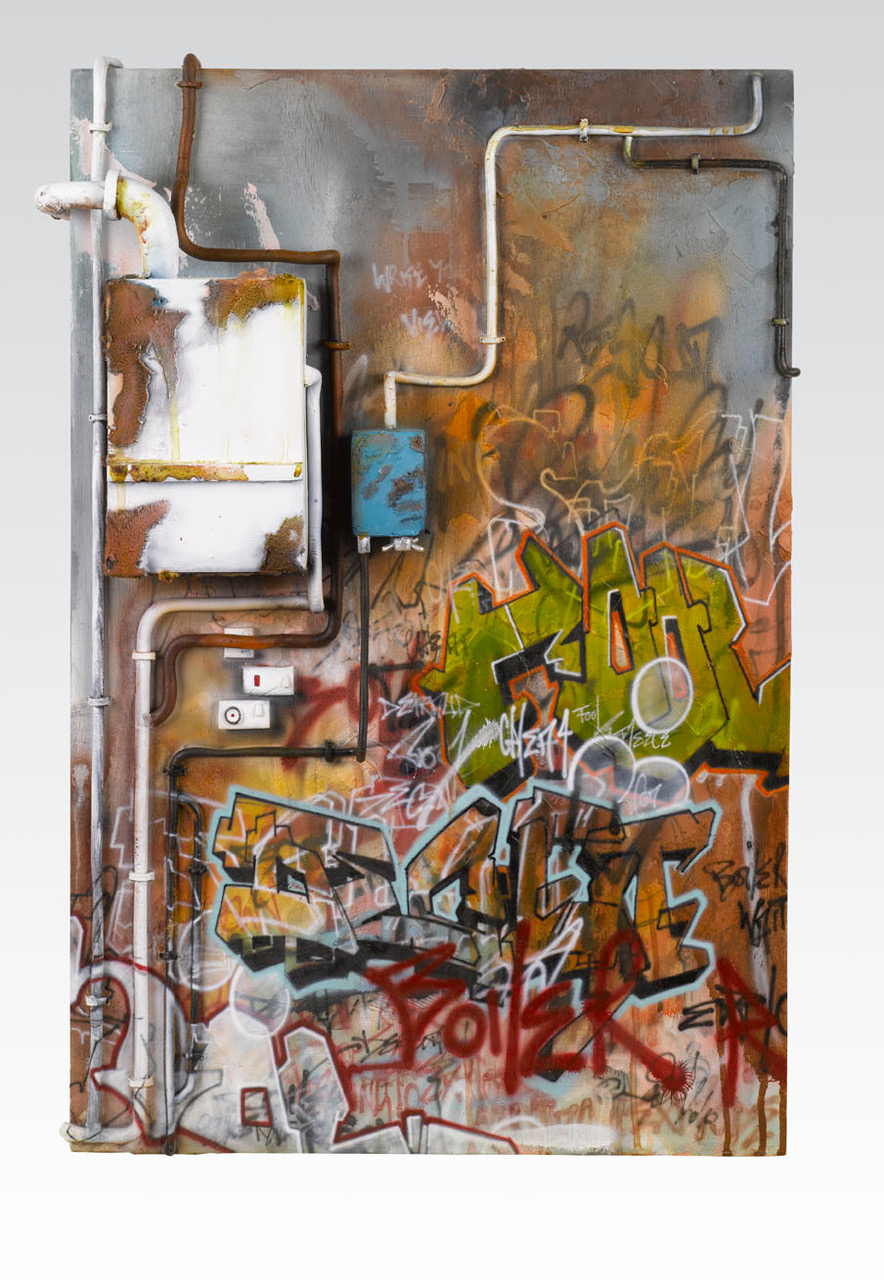
What role do you think art plays in society, and what message or emotion do you hope your art conveys to viewers?
Art plays many roles in society with the message it conveys often dependent on factors such as the subject matter, where it’s intended to hang (i.e., private or public), and so on. These variables provide viewers with additional cues as to its intended message. Art has the power to both condemn and laud, to change one's beliefs, and to take individuals on inner journeys of transformation. Personally, I aspire for my work to convey the beauty of difference, that otherness is something to be celebrated whilst simultaneously taking the viewer into a realm of otherworldliness.
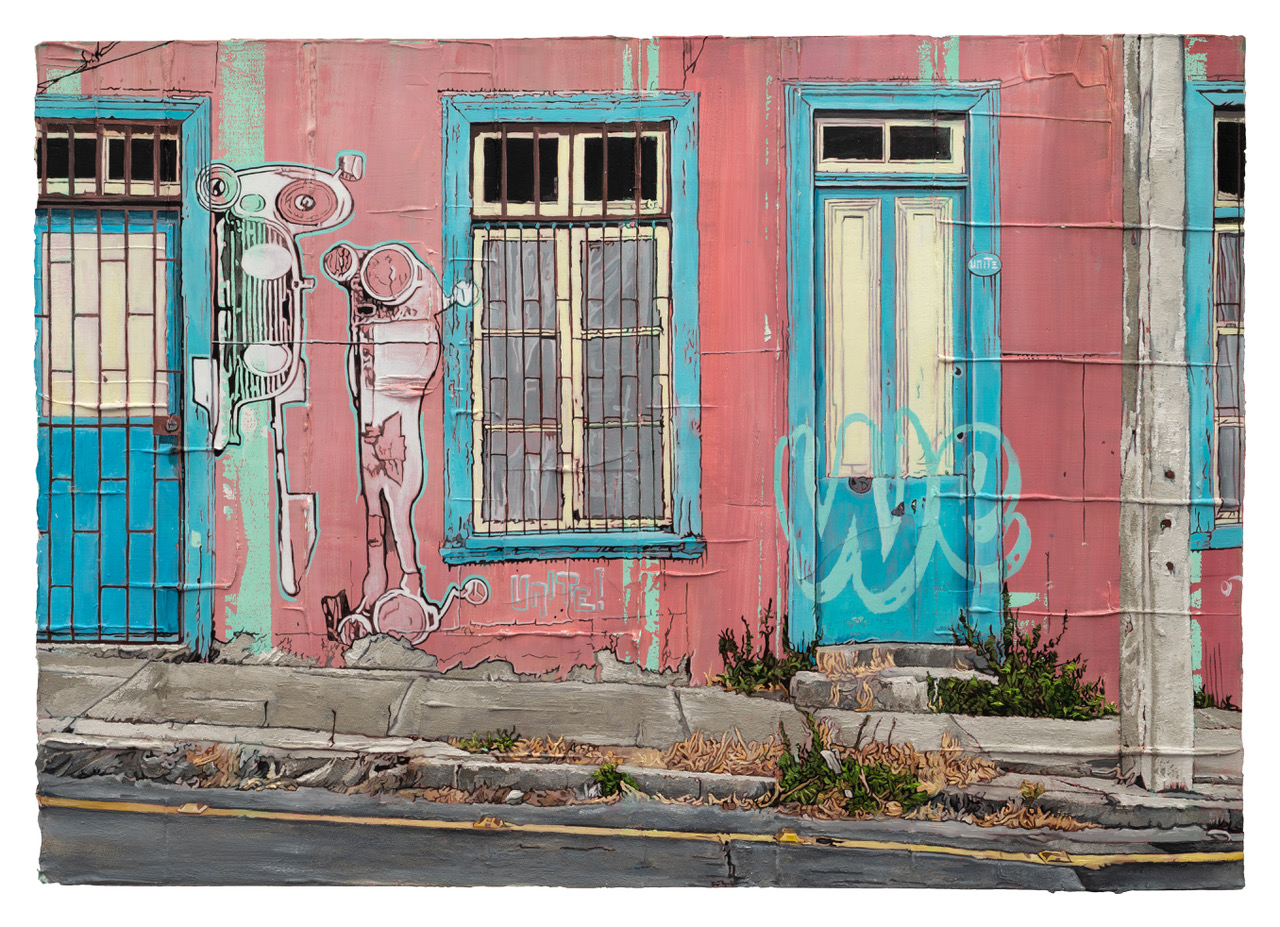
How do you navigate the balance between staying true to your artistic vision and adapting to market demands?
It’s hard to ignore market demands, especially with the barrage we get from social media, but I don’t listen to them! If I did I’d be constantly changing my output. It’d also be impossible to keep up with the changing trends of the day and fool hardy. In my opinion, the only way, is to stay true to my own inner voice and vision.
How do you see your art evolving in the future?
I can definitely see my art, in particular my application of paint when painting nature, freeing up and becoming more gestural and expressive.
